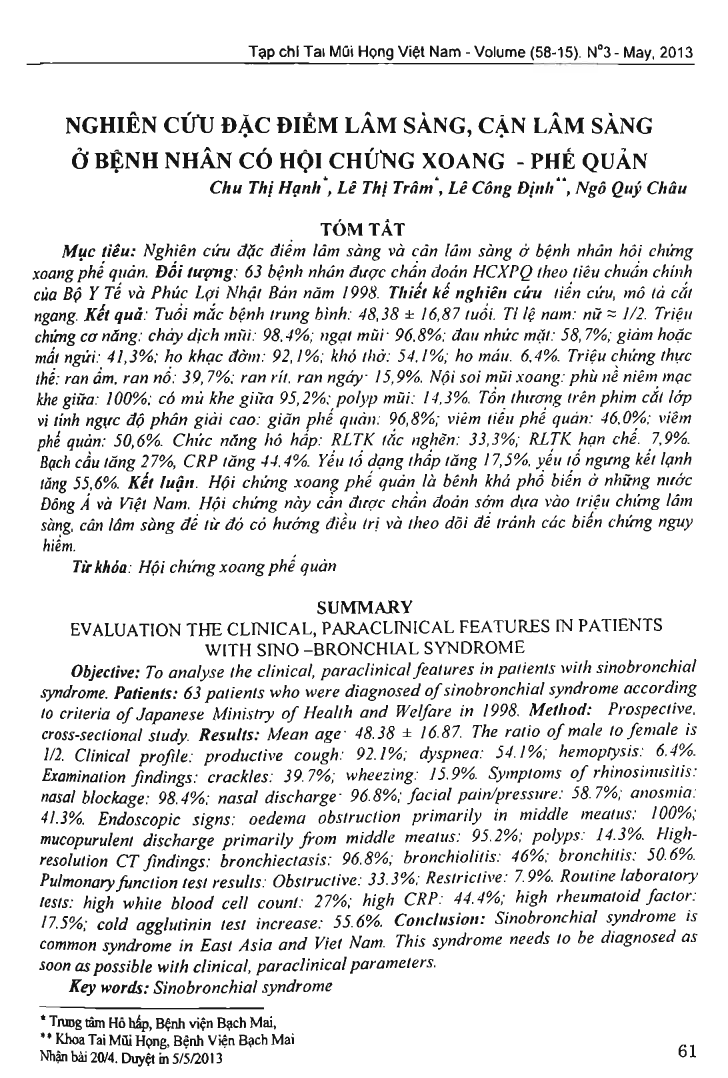
Objective: To analyse the clinical, paraclinical features in patients with sinobronchial syndrome. Patients: 63 patients who were diagnosed of sinobronchial syndrome according to criteria of Japanese Ministry of Health and Welfare in 1998. Method: Prospective, cross-sectional study. Results: Mean age: 48.38 + or - 16.87. The ratio of male to female is 1/2. Clinical profile: productive cough: 92.1 percent; dyspnea: 54.1 percent; hemoptysis: 6.4 percent. Examination findings: crackles: 39.7 percent; wheezing: 15.9 percent. Symptoms of rhinosinusitis: nasal blockage: 98.4 percent; nasal discharge: 96.8 percent; facial pain/pressure: 58.7 percent; anosmia: 41.3 percent. Endoscopic signs: oedema obstruction primarily in middle meatus: 100 percent; mucopurulent discharge primarily from middle meatus: 95.2 percent; polyps: 14.3 percent. Highresolution CT findings: bronchiectasis: 96.8 percent; bronchiolitis: 46 percent; bronchitis: 50.6 percent. Pulmonary function test results: Obstructive: 33.3 percent; Restrictive: 7.9 percent. Routine laboratory tests: high white blood cell count: 27 percent; high CRP: 44.4 percent; high rheumatoid factor: 17.5 percent; cold agglutinin test increase: 55.6 percent. Conclusion: Sino bronchial syndrome is common syndrome in East Asia and Viet Nam. This syndrome needs to be diagnosed as soon as possible with clinical, paraclinical parameters.
- Đăng nhập để gửi ý kiến
